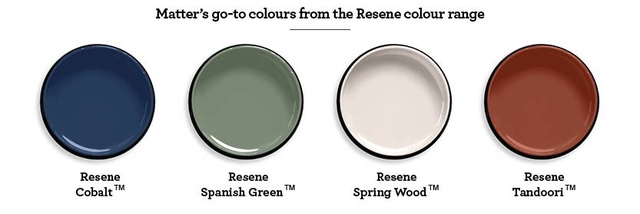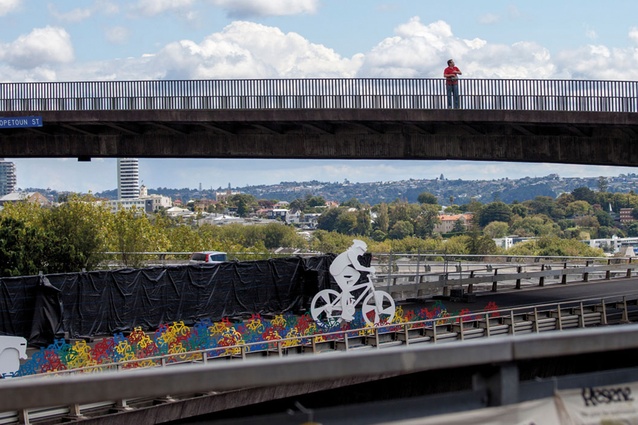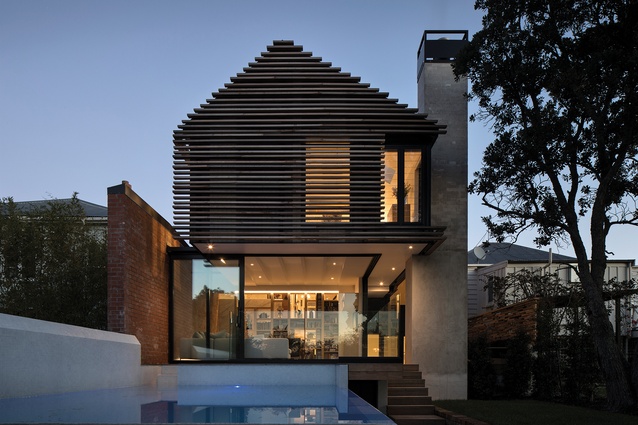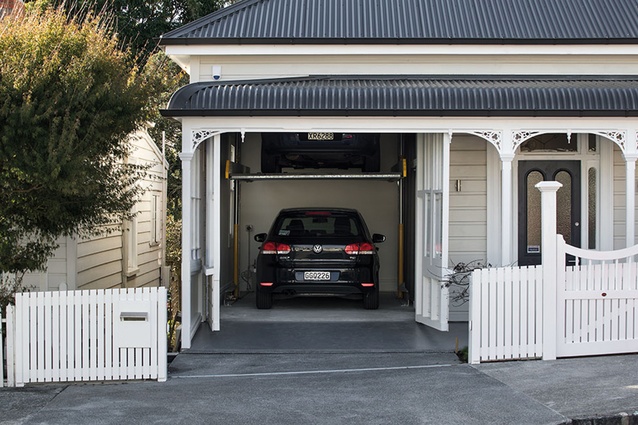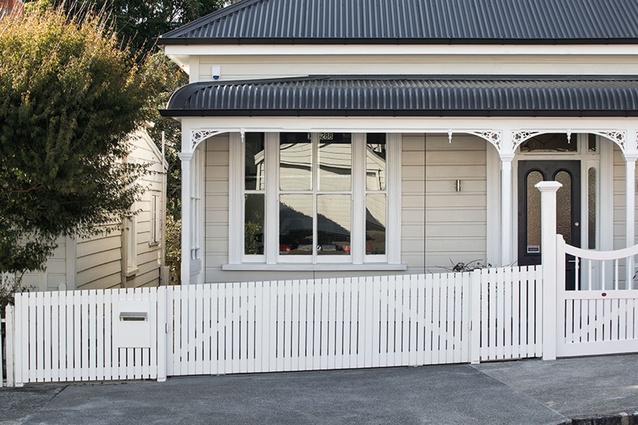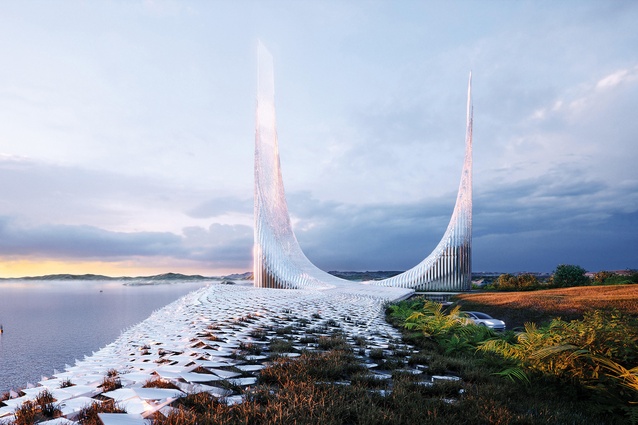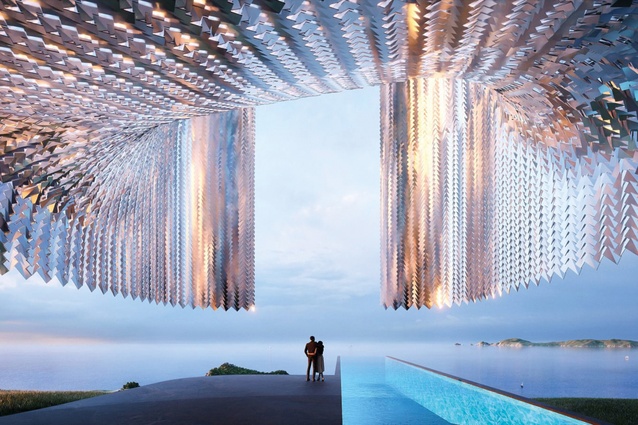The evolution of Matter
How do you create an architecture practice and what can it provide that is unique within its position, from a geographic, intellectual and deliverables perspective? Matter turns 10 this year and we continue to ask these questions within our practice on a regular basis.
Here, we discuss some ideas that we have explored in our practice over time, what makes us tick and a few of our projects.
Imagine a space where a tree branch meanders out above the ground, hovering as it sways in the breeze. A child happens upon this scenario, with the outcome being hours of play. There is a beautiful tension between the branch and the ground, the gravity-defying moment connecting the observer with opportunities and inviting them to inhabit the space in a joyful manner. This interaction happens only from the combination of elements working together to create the whole.
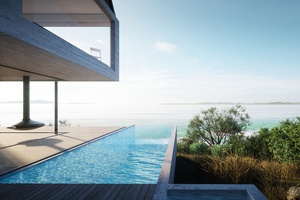 There is a simple and beautiful narrative around a child playing on a tree branch and, intuitively, we feel it is more than the material of the elements, the nostalgia of youth, and the representation of joy and playfulness. It is this type of magic moment, or interaction, that we strive to achieve in both our practice and our architecture.
There is a simple and beautiful narrative around a child playing on a tree branch and, intuitively, we feel it is more than the material of the elements, the nostalgia of youth, and the representation of joy and playfulness. It is this type of magic moment, or interaction, that we strive to achieve in both our practice and our architecture.
From its inception, the evolution of Matter has been organic, perhaps a complex adaptive system, in which connections between colleagues, consultants, contractors and clients define the practice — an underlying framework of values, storytelling and innovation providing the feedback loop for adaptations.
“I HATE THE WAY DRIVERS NEVER LOOK AT THE ROAD IN OLD AMERICAN MOVIES.”1
The intent of Matter was to represent collaborations — the engine behind our practice and its escapades. There are currently four team members within the practice: individuals with unique skill sets, our relationships more akin to family both in and out of the office.
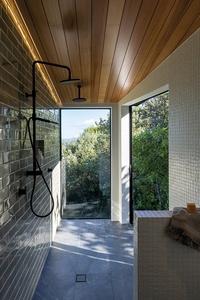
Adam [Locke]’s sense of humanity and placing people first goes nicely with his Point Break approach to life — “Surfing’s the source, change your life, swear to God”.² John [Holley] carries the wisdom of Yoda and his heart on his sleeve, communication skills level 9000 – “Roads?! Where we’re going, we don’t need roads”.³ Kolin [Diadechkin]’s life experience encourages us to challenge the status quo, since he comes from a small town in Siberia where standard wall construction was eight-feet-thick — “Live long and prosper”.4 I watch movies and drink coffee — “Strange things are afoot at the Circle K”.5 Transparency is a natural outcome in this office environment; this is both a freeing and a grounding experience, where movies can be discussed without judgement.
“YEAH, WELL, YOU KNOW, THAT’S JUST, LIKE, UH, YOUR OPINION, MAN.”6
The tree-branch scenario described earlier can be likened to an idea and theory in architecture called assemblage, where a building or a place is neither an object nor a collection of parts — rather, it is an assemblage of socio-spatial flows and intersections. For us, this idea has a lovely way of making the design process about more than the form and function. It requires a deep understanding of the pieces involved — the client, the site, the outcomes — while ensuring there is consideration of the potentials, the intangible in-betweens and the happy accidents.
“THERE IS NO SPOON.”7
Creating these moments in architecture deals with the interconnectivity that flows between constituent parts, wherein the identities and functions of both parts and wholes emerge from the flows between them: at once, material and representational.

This thought process resonates with our practice, encouraging us to view structures as dynamic compositions of elements, sparking 02 creativity in the fusion of materials and forms. It allows us to ‘let go’ in certain ways, and not rigidly resolve and control all aspects, ensuring that what we design is for people rather than architects. Placing people at the core, alongside a playful approach, adds elements of delight, making each assemblage an ongoing story.
“EVERY REAL STORY IS A NEVER-ENDING STORY.”8
Part of our design approach is to engage with these types of formatives and thought processes, overlaying them on the decades of training and practice that allow for the creation of spaces that function correctly, centred around humans and striving to enhance their experience. This way of thinking ensures we see our architecture as a developing thing, the complete building forming the beginning of the process, the use of the architecture over time developing the space into what it is meant to be.
“HOW ACCIDENTAL OUR EXISTENCES ARE, REALLY, AND HOW FULL OF INFLUENCE BY CIRCUMSTANCE.”9
This idea was explored with our ‘missing link’ or Nelson Street off-ramp cycle path project. The old derelict off-ramp and the re-use of this asset were of particular interest to us and, while teaching a design studio at AUT, we invested our own time and approached Waka Kotahi (NZTA) with our ideas on the re-use of this terrain vague. We wanted to engage the public with the future possibilities for this stretch of suspended concrete, the outcome materialising into a visual narrative based around five moments describing the evolution of transport, surrounded by 365 stylised bikes, identifying every day of each year the off-ramp was not used to its full potential. Installing the bikes was like being in a 1980s’ rock band; we all wore fluoro high-vis vests and were surrounded by heavy metal and speed.
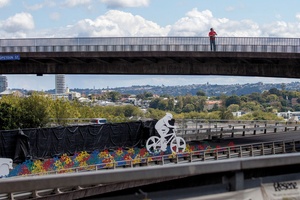
This project galvanised the relative parties into moving forward with utilising this space.
This design approach is multi-scalar with smaller assemblages (cabinetry, rooms, homes) approached using a similar methodology to that of larger ones (multi-residential, offices, cities, societies) without reduction of the smaller to the larger. The idea of scale is an interesting one, raising the perspective that every thing, every object, only looks as though it’s a thing — as something real in itself — people’s use of the thing being the common link within architecture.
“YOU’RE GONNA NEED A BIGGER BOAT.”10
The drama created with the hidden garage at the Tree Villa project provides a smaller-scale example of the way in which ideas can translate into engaging, ongoing interactions and connectivity. We inserted a modern, stacked garage within a traditional villa by adapting the original sash window and weatherboard exterior wall. We could not have predicted the drama created on the streetscape as the traditional villa exterior wall parts outwards to accept two cars: the debates on what was inside, and the excitement and joy of children seeing this in action.

Alongside our design approach being multiscalar, we also view our practice in this way.
We collaborate with others, creating a smallpractice super-organism. These talented teams include Mark Frazerhurst Architects, Sayes Jackson Architects, Nomad Design, TDM, MAUD and others. These interconnections help in every aspect of our architecture, providing a network of unrestrained creativity, flexibility of project typology, transparency, experimental spectrum and challenging critique. Working in groups produces beautiful opportunities, many of which are intangible until they occur. We are only ever as good as our least-developed attribute and the race for knowledge, experience and perspective is ongoing. This small-practice super-organism thrives on its ability to adapt and innovate, staying true to its core values while embracing change.
“MULTI PASS.”11

A recent project, the Pink Palace, sets up these assemblages within an office environment, providing green roofs, courtyards and hammock flooring inside and out. A moment of anxiety is followed by relief and joy upon stepping over one such threshold onto a semi-transparent hammock suspended 4 metres in the air.
The en suite bathroom in the Daniels Reef Lookout project consists of an opening wall; you can engage with the established bush, share your shower with a kererū and sample the weather from within.
Making these moments alongside our clients is another process we consider carefully, understanding that it relies on our ability to communicate ideas and thoughts clearly. Art came before science and we keep this in mind as we wade through the complexity of our industry, from design to construction.
The value of a simple sketch through to our virtual-reality walk-throughs is that, together, they provide the breadth and quantitative approach that the written and spoken word or the plans can lose in translation.
“I WENT TO THIS TEMPLE AND ALL THESE MONKS WERE CHANTING AND I DIDN’T FEEL ANYTHING. JOHN’S BEEN USING THESE HAIR PRODUCTS AND I DON’T KNOW WHO I MARRIED ANY MORE.”12
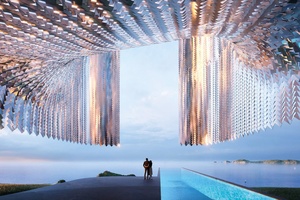
Through prioritising the exploration of new ideas and systems to capture our concepts, we have attempted to push the boundaries of what is possible here, creating a hypothetical proposal called the ‘Hyperbole House’, representing a conversation around architecture and its potential. The project strives to challenge us. We are tending towards a point in architecture where we can manifest what we imagine and this raises the question of what should be manifested in the time we have. It reminds us of the power and responsibility of architecture to inspire conversation, generate ideas, bring wonder and joy, and connect humans with each other and their environment. What is fit for purpose and how can building design navigate the nexus between the human condition and our context, physically and spiritually?
“WHAT IS REAL? HOW DO YOU DEFINE ‘REAL’? IF YOU’RE TALKING ABOUT WHAT YOU CAN FEEL, WHAT YOU CAN SMELL, WHAT YOU CAN TASTE AND SEE, THEN ‘REAL’ IS SIMPLY ELECTRICAL SIGNALS INTERPRETED BY YOUR BRAIN.”13
We entered this concept into the World Architecture Festival (WAF) and it has been short-listed alongside our Pink Palace office project. In this case, the created assemblage brought our practice immense joy and brings us up to date with our 10-year journey.

Matter is recognised for its work in architecture, urban planning, art, design and strategic thinking. The practice looks to find innovative design solutions for its clients through a working methodology of collaboration and assemblage. With architecture at its core, Matter participates in a wide spectrum of design work and solution-providing throughout New Zealand, prioritising people, sustainability and exceptional creative product.
REFERENCES
1. Amélie Poulain, Amélie.
2. Teenager, Point Break.
3. Dr Emmett Brown, Back to the Future.
4. Dr Spock, Star Trek.
5. Ted, Bill & Ted’s Excellent Adventure.
6. Jeffrey Lebowski, The Big Lebowski.
7. Young monk, The Matrix.
8. Michael Ende, The Neverending Story.
9. Louis Kahn, My Architect.
10. Chief Brody, Jaws.
11. Leeloo, Fifth Element.
12. Charlotte, Lost in Translation.
13. Morpheus, The Matrix.
